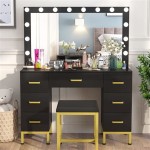How To Hang a Frameless Mirror On Concrete
Hanging a frameless mirror on a concrete wall presents a unique set of challenges. The absence of a traditional frame means there are no pre-drilled holes or easy attachment points. Additionally, concrete's hardness requires specialized tools and techniques for secure mounting. This guide outlines the necessary steps and considerations for successfully hanging a frameless mirror on a concrete wall.
1. Assessing the Mirror and Wall
Before beginning, carefully examine the back of the mirror for any existing mounting hardware or designated hanging points. Note the mirror's weight and dimensions. Heavier and larger mirrors require more robust mounting solutions. Inspect the concrete wall for any cracks, imperfections, or existing fixtures that might interfere with the installation process. Ensure the wall is clean and free of dust and debris for optimal adhesive bonding.
2. Choosing the Right Mounting Method
Several methods are suitable for hanging frameless mirrors on concrete. The best option depends on the mirror's size and weight, as well as personal preference. Adhesive-based methods using mirror mastic or construction adhesive are suitable for lighter mirrors. For heavier mirrors, mechanical fasteners like J-clips, Z-clips, or through-bolts offer a more secure hold.
Mirror mastic is a specialized adhesive designed for bonding mirrors to various surfaces, including concrete. It offers a strong hold and some flexibility, accommodating minor imperfections in the wall. Construction adhesive provides an even stronger bond but less flexibility. Mechanical fasteners offer the utmost security, particularly for large, heavy mirrors. These fasteners require drilling into the concrete and attaching clips or bolts to the wall, which then support the mirror.
3. Gathering the Necessary Tools and Materials
Assemble all required tools and materials before commencing the installation. For adhesive-based methods, this includes the chosen adhesive, a caulking gun, painter's tape, a level, and measuring tape. For mechanical fasteners, gather a hammer drill with a masonry bit, appropriate anchors, screws, the chosen clips or bolts, a level, and measuring tape. Safety glasses and gloves are recommended for all methods.
4. Preparing the Concrete Surface
Thorough surface preparation is crucial for achieving a strong and lasting bond. Clean the concrete surface with a damp cloth to remove dust, dirt, and any loose particles. Allow the area to dry completely before proceeding. If the concrete surface is uneven or has significant imperfections, consider using a concrete patching compound to create a smooth and level surface for the mirror.
5. Marking and Positioning the Mirror
Accurate placement is essential for a visually appealing result. Use a pencil and level to mark the desired position of the mirror on the wall. Measure and mark the mirror's dimensions on the wall, ensuring the lines are level and plumb. Use painter's tape to create a template on the wall, outlining the mirror's perimeter. This serves as a guide during the installation process.
6. Applying the Adhesive or Installing the Fasteners
For adhesive installations, apply the mirror mastic or construction adhesive to the back of the mirror according to the manufacturer's instructions. Typically, the adhesive is applied in vertical lines or a grid pattern. Carefully position the mirror onto the marked area, pressing firmly and evenly to ensure proper adhesion. Use painter's tape to support the mirror while the adhesive cures.
For mechanical fastener installations, use a hammer drill and masonry bit to drill pilot holes at the marked locations. Insert appropriate anchors into the holes and secure the chosen clips or bolts. Carefully position the mirror onto the installed hardware, ensuring it sits securely and level. Tighten any remaining screws or bolts as needed.
7. Finishing Touches and Safety Considerations
After the adhesive has cured or the mechanical fasteners are secured, remove any painter's tape. Inspect the installation to ensure the mirror is securely mounted and level. For added safety, consider applying a thin bead of neutral-cure silicone sealant along the edges of the mirror where it meets the wall. This helps prevent moisture from seeping behind the mirror and provides additional stability. Always prioritize safety when working with power tools and adhesives. Follow manufacturer instructions carefully and wear appropriate safety gear.

Cement Wall Gym Mirror Installation Two J Channel Method

How To Hang A Large Wall Mirror Step By Tutorial

How To Hang A Mirror On Concrete Walled Garage

Cement Wall Gym Mirror Installation Two J Channel Method

How To Hang A Large Or Heavy Mirror

Hanging Mirror With Tapcon Concrete S In Mount On Wall French Cleat

How To Hang A Frameless Mirror On The Wall With Pictures

Vidaxl Led Bathroom Mirror Concrete Gray 23 6 X3 3 X14 Acrylic 1 Set Gerbes Super Markets

How To Hang A Heavy Mirror In 5 Simple Steps

Otti Bondi Round 800mm Led Framelss Mirror Ideal Bathroom Centre








